
Space Tourism Pilot Programs: Space tourism is an evolving sector that extends the thrill of space exploration to non-professional astronauts. With advances in technology and the entry of private companies into the space race, the dream of gazing upon Earth from the expanse of space is becoming more attainable. We, along with a medley of commercial space tourism providers, are spearheading efforts to turn once distant fantasies into reality, enabling individuals to experience the awe of space travel.
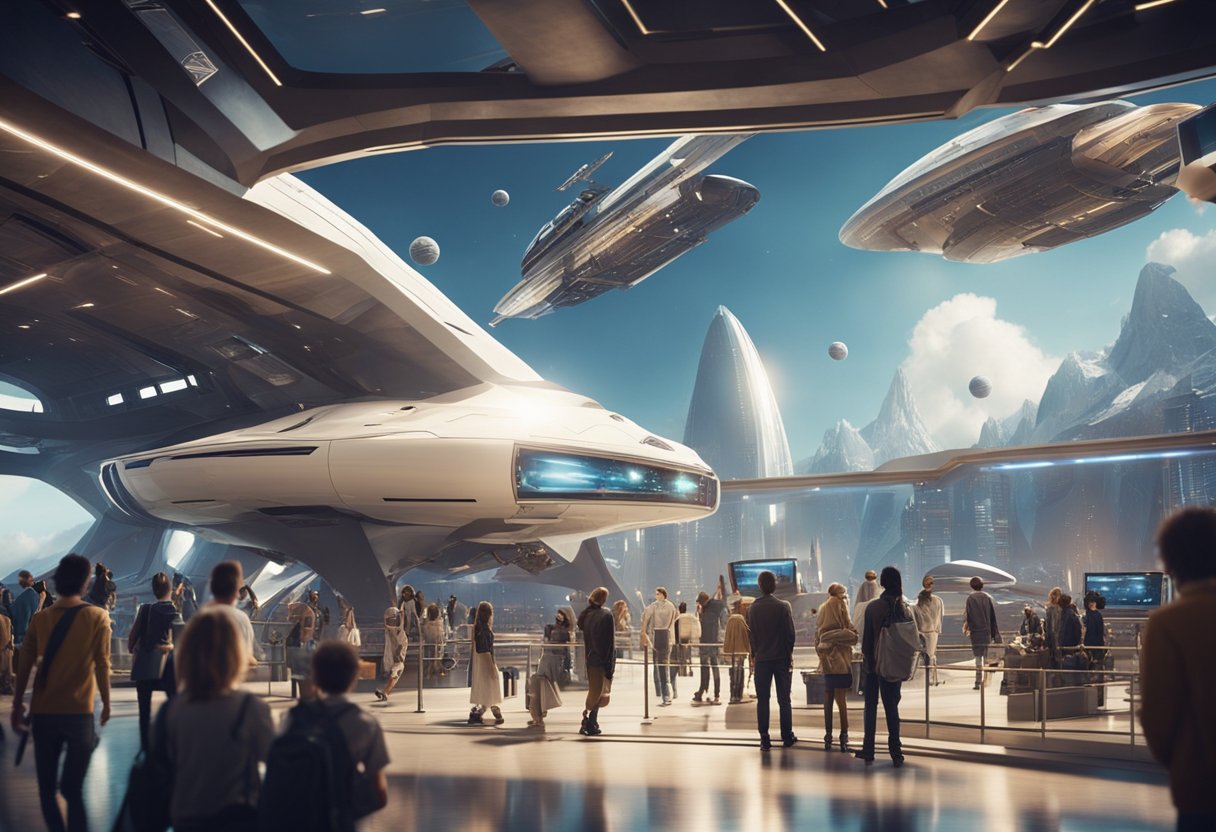
In the nascent stages of space tourism, our journey has been punctuated by significant milestones—the first private citizens visiting the International Space Station, for example, and the latest developments of pilot programs aimed at refining space travel for tourists. We are actively engaging with companies like Virgin Galactic, Blue Origin, and SpaceX, each carving their path in this new era of space travel. For us, it’s not just about the vehicles that will carry tourists beyond Earth’s atmosphere; it’s also about preparing participants for the physical and mental challenges of spaceflight through comprehensive training programs.
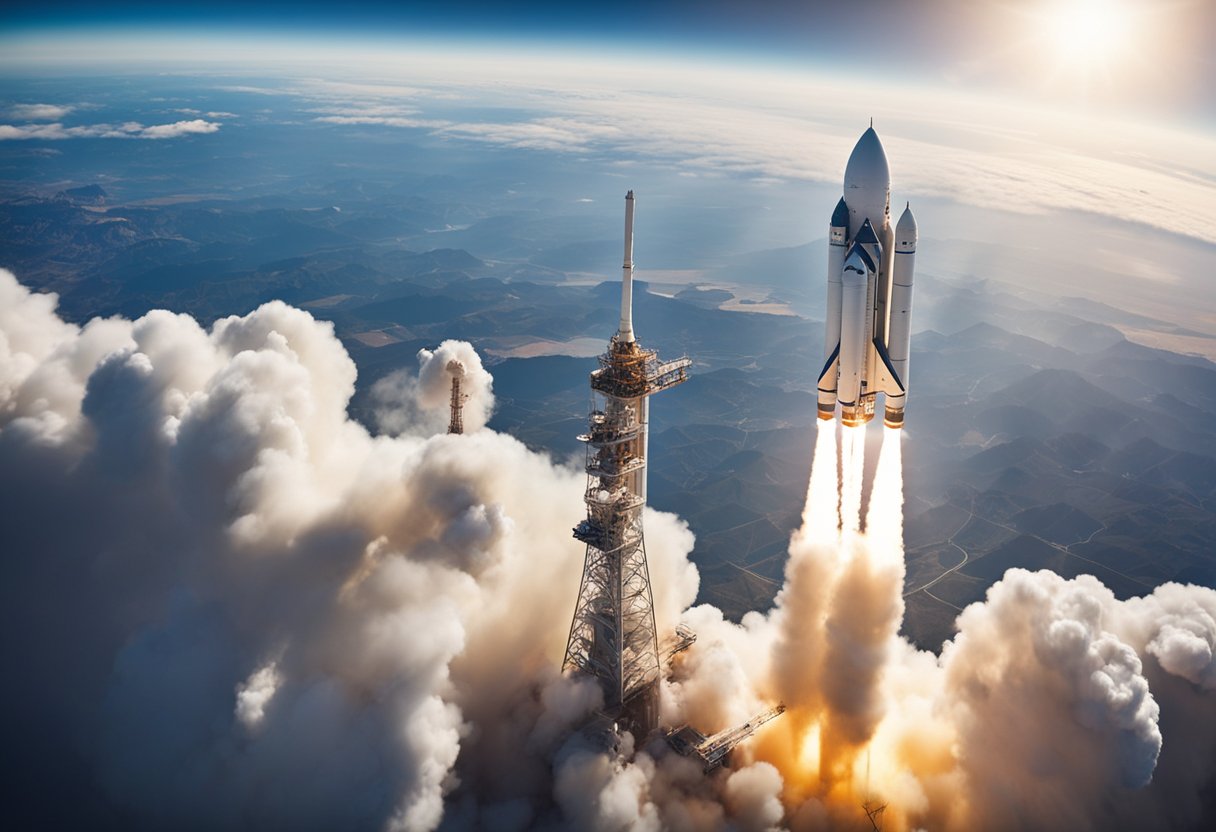
In considering the evolution of space tourism, we focus on the crucial early developments and the individuals who have made historic journeys as private citizens.
Space tourism became a reality when Space Adventures, an American space tourism company, facilitated the journey of the first paying space tourist. In April 2001, the company made headlines around the world as they helped businessman Dennis Tito realise his dream of travelling to space. Tito flew aboard a Russian Soyuz spacecraft, marking him as a pioneer amongst private citizens in space.
Popular interest in space tourism significantly increased following Tito’s expedition. Since then, several private citizens have ventured into space. Each space tourist has furthered the understanding and viability of commercial spaceflight. Utilising Russian Soyuz spacecraft, Space Adventures has continued to provide opportunities for those with the means and desire to visit space, thereby expanding our perspective on human spaceflight. Among the notable figures is American entrepreneur Anousheh Ansari, who, in 2006, became the first female private space explorer.
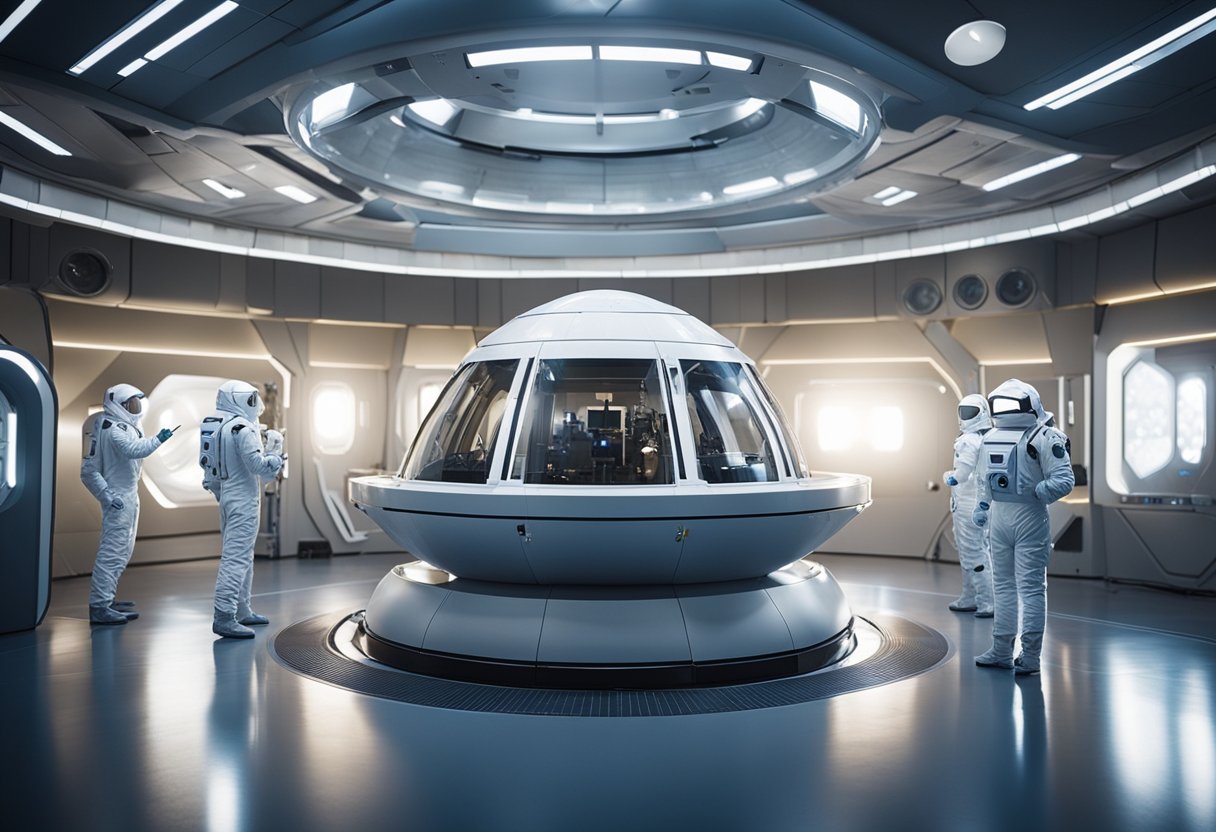
In the burgeoning arena of commercial space travel, we observe a selection of pioneering companies aiming to make history. Each provider is spearheading their unique missions and spacecraft, with aspirations high above the Earth’s atmosphere.
Virgin Galactic, founded by Sir Richard Branson, is making strides with their SpaceShipTwo. We’ve seen test flights demonstrating the vehicle’s capacity for suborbital spaceflights, designed for the public.
Blue Origin’s New Shepard, a venture by Jeff Bezos, aims to offer passengers a trip beyond the Kármán line. The company boasts a fully reusable rocket and a capsule for a true astronaut experience.
Headed by Elon Musk, SpaceX is not just pioneering commercial space travel; it’s also looking towards Mars colonisation. With their Dragon spacecraft, they have already transported astronauts to the International Space Station and are working on technologies to support further space exploration.
Axiom Space plans to construct the first commercial space station. They intend to provide a platform for research, manufacturing, and even tourism, leveraging the expertise gained from their involvement with the International Space Station.
Space Perspective is charting a different course by offering high-altitude balloon experiences. They aim to provide a serene and accessible space tourism experience without the need for traditional rocket propulsion.
Roscosmos, Russia’s state corporation for space activities, has been a spaceflight frontrunner for decades, utilising the time-tested Soyuz spacecraft. They have expressed plans to continue facilitating space tourism to the International Space Station.
For those intrigued by the prospects of space tourism, a visit to SpaceVoyageVentures.com will offer an insightful glimpse into current and future endeavours.
In our exploration of space tourism, we focus on the crafts that bridge the gap between Earth and the cosmos, along with the pivotal technologies that make this daring venture possible.
Space tourism is poised on the brink of reality with two types of spacecraft: orbital and suborbital. Orbital crafts, such as the Dragon spacecraft, are designed for longer journeys and are capable of circling the Earth in low orbit. On the other hand, SpaceShipTwo and the New Shepard are geared towards suborbital spaceflight, offering passengers a brief, yet exhilarating experience of weightlessness and spectacular views of Earth from the edge of space.
Orbital Flight:
Advancements in technology are the cornerstone of the burgeoning space tourism industry. These innovations pertain to propulsion systems, safety mechanisms, and passenger experience. Spacecraft like SpaceShipTwo and New Shepard exemplify the integration of reusable rocket technology, which is crucial for sustainable and cost-effective space tourism. We also see progress in materials used for construction, which must withstand harsh conditions of space while optimising for weight and durability.
For more detailed updates on future trips or for information on currently and nearly available space tourism experiences, SpaceVoyageVentures.com provides comprehensive insights into the exciting realm of space travel.

As we embark on the journey of space tourism, it’s crucial for us to focus on how astronauts and space tourists prepare for their extraordinary experiences beyond our atmosphere. This encompasses rigorous training programmes that ensures they’re equipped to handle the intricacies of space travel.
Our training for space tourists is designed to condense years of astronaut training into a manageable timeframe. It’s vital that we cover the essentials of operating in a zero-gravity environment. Participants will learn about orbital mechanics, Space Station systems, and how to navigate the challenges they might face while in orbit.
For practical experience, we typically include exercises in simulators that replicate the spaceflight experience. These simulate both the physical sensations of launch and re-entry and the weightlessness encountered in space. Our partners at the National Aerospace Training and Research (NASTAR) Center provide invaluable facilities for such training.
The safety of our space tourists is our top priority. We follow strict guidelines and protocols set out by authorities, such as the Federal Aviation Administration (FAA), to maintain the highest safety standards. Emergency procedures are a critical component of our training program, where tourists learn to respond to scenarios like fire, cabin depressurization, or medical emergencies.
Additionally, we place a significant emphasis on building quick decision-making skills. Flight training in high-performance aircraft, akin to that undertaken by professional astronauts, prepares our tourists to think and act promptly under pressure.
Our comprehensive training ensures that when the moment for lift-off comes, our space tourists are not just passengers but informed and well-prepared travellers adept at navigating the final frontier.
Embarking on a journey to the edges of our atmosphere presents a convergence of human aspiration and advanced technology. For us, the allure of viewing Earth from space and experiencing weightlessness compels an exploration into the exclusive realm of space tourism.
Suborbital flights are the cornerstone of current space tourism ventures, offering civilians, whom we refer to as space tourists, a transient voyage beyond the Kármán line – the recognised boundary of outer space 100 kilometres above Earth. Our trajectory begins with a rocket-powered ascent, piercing through the upper atmosphere to reach the frontier of space. Moments of intense acceleration give way to serenity as the vehicle coasts at the apogee of the flight path, briefly allowing passengers an unparalleled perspective of our planet.
Once in space, we are treated to the phenomenon of weightlessness. Seemingly defying the very nature of our existence, this state of zero gravity affords us the ability to float freely, an experience only a select few have known. Amidst the backdrop of the cosmos, travellers witness the thin blue line of Earth’s atmosphere, a sight that reshapes our perception of the planet we call home. Our time in this microgravity environment is transient yet utterly transformative, imprinted in our memories long after the return to terra firma.
In light of the burgeoning interest in extraterrestrial excursions, we examine the financial facets integral to space tourism, evaluating the cost to individuals and the prospects within this high-stakes market.
Space travel comes with a hefty price tag, largely due to the complex technology and safety measures required. Ticket prices for a suborbital jaunt can stretch into the hundreds of thousands of pounds, and until recently, were exclusively afforded by billionaires and private entities. For example, a space tourist might procure a seat on a commercial suborbital flight at an exorbitant cost.
UBS anticipates the valuation of the space tourism industry to exceed £640 billion by the year 2030. As we witness a surge in the number of space tourists, our assessments reveal a growing list of enterprises eager to capitalise on this market. Drawing from data collated by pioneering websites like SpaceVoyageVentures.com, projections indicate a trend toward more affordable space travel, expanding market reach beyond the super-wealthy to a broader audience.
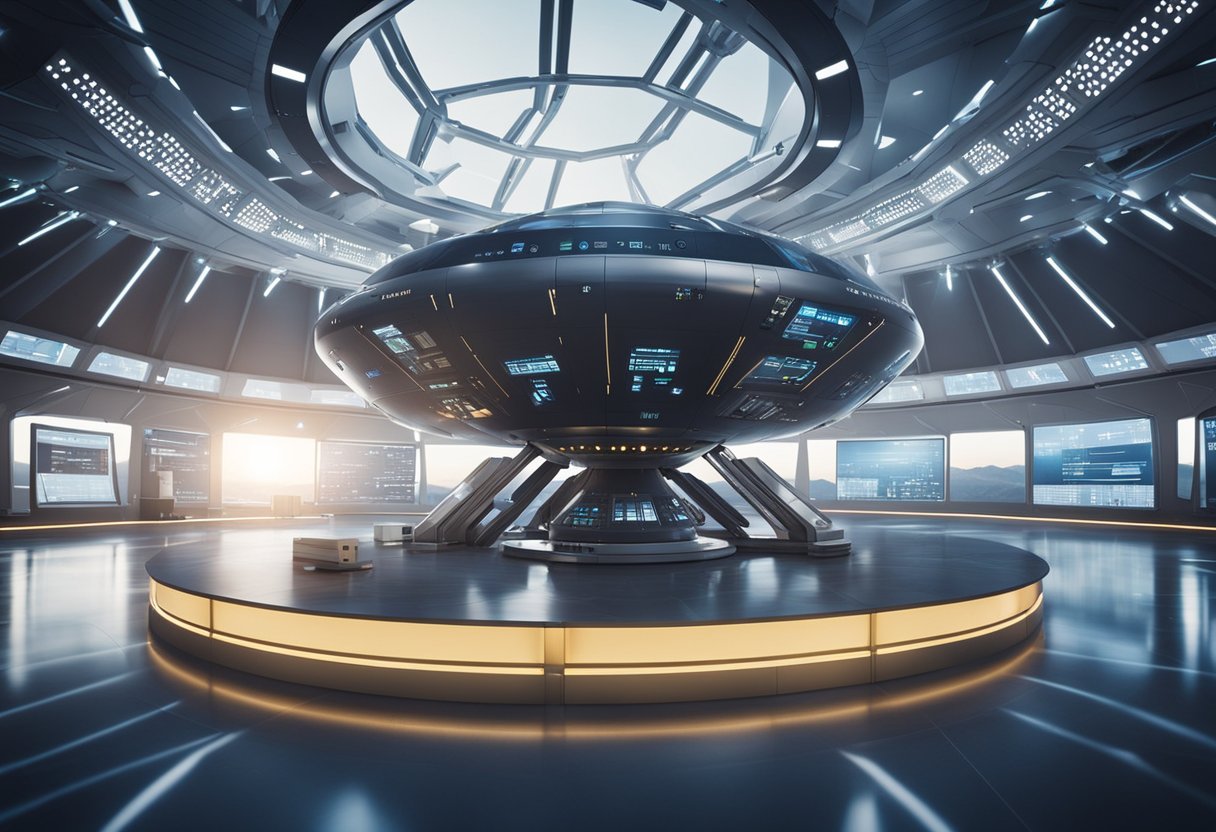
As we embark on the journey of space tourism, we stand at the confluence of two critical streams: regulation and environmental protection. These considerations ensure the safety and sustainability of space ventures for current and future generations.
In navigating the laws of the cosmos, we recognise the pivotal role of the Federal Aviation Administration (FAA). It holds the helm in regulating commercial spaceflight within the United States. Operators aspiring to enter space must secure licenses and meet rigorous safety standards. Legislation such as the Commercial Space Launch Amendments Act of 2004 has set out a learning period allowing businesses to hone their models and safety protocols without overly stringent regulation. Companies crafting the narrative of space tourism like those documented on SpaceVoyageVentures.com must adhere to these governance structures to ensure legality and safety.
International coordination is paramount as these ventures do not fall under the jurisdiction of any single nation. Laws and regulations must be formulated that cross not just national but planetary borders.
Our commitment to space exploration comes with an obligation to consider its environmental footprint. As we scale the heights of space, we owe it to our planet to address the impacts comprehensively. For instance, emissions from rocket launches could have atmospheric consequences, and potential space debris might affect the orbital paths around the Earth.
Studies, like one detailed in ScienceDirect, highlight the need for a Life Cycle Assessment of space activities and their environmental sustainability. As we examine our endeavours in the cosmos, we must log in every factor that plays into the ecological equation, ensuring that our adventures do not turn into liabilities for our environment.
In sum, as guardians of both Earth and the expanse of space, we are tasked with shaping a path that honours the law and cherishes our environment. It’s a balance we must strike with utmost care, as we draft the future of space tourism.
As we look to the future of space tourism, the industry is poised to transcend beyond mere orbital experiences to encompass even more audacious ventures such as interplanetary travel and the development of space hotels.
The prospect of travelling beyond Earth’s atmosphere, once relegated to the realms of science fiction, is now becoming a conceivable reality. Companies are actively working on missions that might one day allow individuals to visit other planets, with Mars as a prominent destination in our sights. Lessons learned from historic undertakings like the Apollo 11 mission fuel our confidence in addressing the challenges posed by such colossal endeavours. Our eyes are set firmly on the horizon, where trips such as the Axiom Mission promise to extend our reach into the cosmos.
The ambition to establish accommodations in space is rapidly metamorphosing from a visionary concept to a tangible plan, with commercial space companies fervently developing space hotels. Pioneering this revolutionary hospitality sector, we envisage not just brief sojourns but extended stays in orbit, where guests could revel in the unique experience of weightlessness and panoramic celestial views. Our commitment to crafting these out-of-this-world experiences is encapsulated in ventures like the upcoming SpaceVoyageVentures.com, which will stand as testament to our tenacity to redefine travel.

In this section, we discuss how prospective space tourists can secure their spots on these out-of-this-world trips and how the industry is working towards making space travel accessible to a wider audience.
Reservations for space tourism can be made through various channels, but one pioneering platform in this realm is SpaceVoyageVentures.com. Our database includes a wide range of opportunities, from suborbital experiences to orbital hotel stays. To make a reservation, tourists typically need to:
We recognise the importance of making space accessible to all individuals, irrespective of their physical capabilities. Recently, the European Space Agency has indicated a commitment to this goal through its Parastronaut Feasibility Project, with the aim of selecting an astronaut with a physical disability. We strive to collaborate with companies that embody this inclusive spirit. Our team also works closely with providers like World View and Space Adventures to ensure that a more diverse group of tourists can experience the wonders of space.
In this section, we detail the extraordinary milestones that have shaped space tourism, highlighting record-breaking journeys and the entrance of well-known figures into space exploration.
Our journey through the history of space tourism is punctuated by landmark tests and missions. Virgin Galactic’s Unity 22 test flight stands out as a monumental achievement. With both manufacturers and tourists eager to breach the final frontier, these test flights serve as a precursor to fully operational suborbital trips. Space tourism took a giant leap in 2021 with this mission, which whisks passengers just beyond the Kármán line – the recognized boundary of space.
The visionary Alan Shepard’s historic flight remains ever significant as the first American in space, and his legacy propels our current ambitions, inspiring the continual push for accessible civilian space travel. Shepard’s mission not only marked an incredible personal achievement but also a seminal moment prompting the evolution from government-exclusive space exploration to inclusive, civilian space experiences.
Celebrities venturing into space represent a fusion of pop culture with cutting-edge space exploration. William Shatner, renowned for his portrayal of Captain James T. Kirk in Star Trek, transitioned from science fiction to reality when he became the oldest person at age 90 to experience weightlessness in space. Shatner’s voyage aboard Blue Origin’s New Shepard spacecraft marks a symbolic convergence of entertainment and space tourism industries, underscoring space travel’s broader appeal and growing accessibility.
Our collective interest in space tourism is continually fuelled by such high-profile flights, which garner global media attention and affirm the viability of consumer space travel. Celebrities leveraging their star power to participate in space missions underscores the sector’s expansion, captivating the imagination of potential tourists around the world.
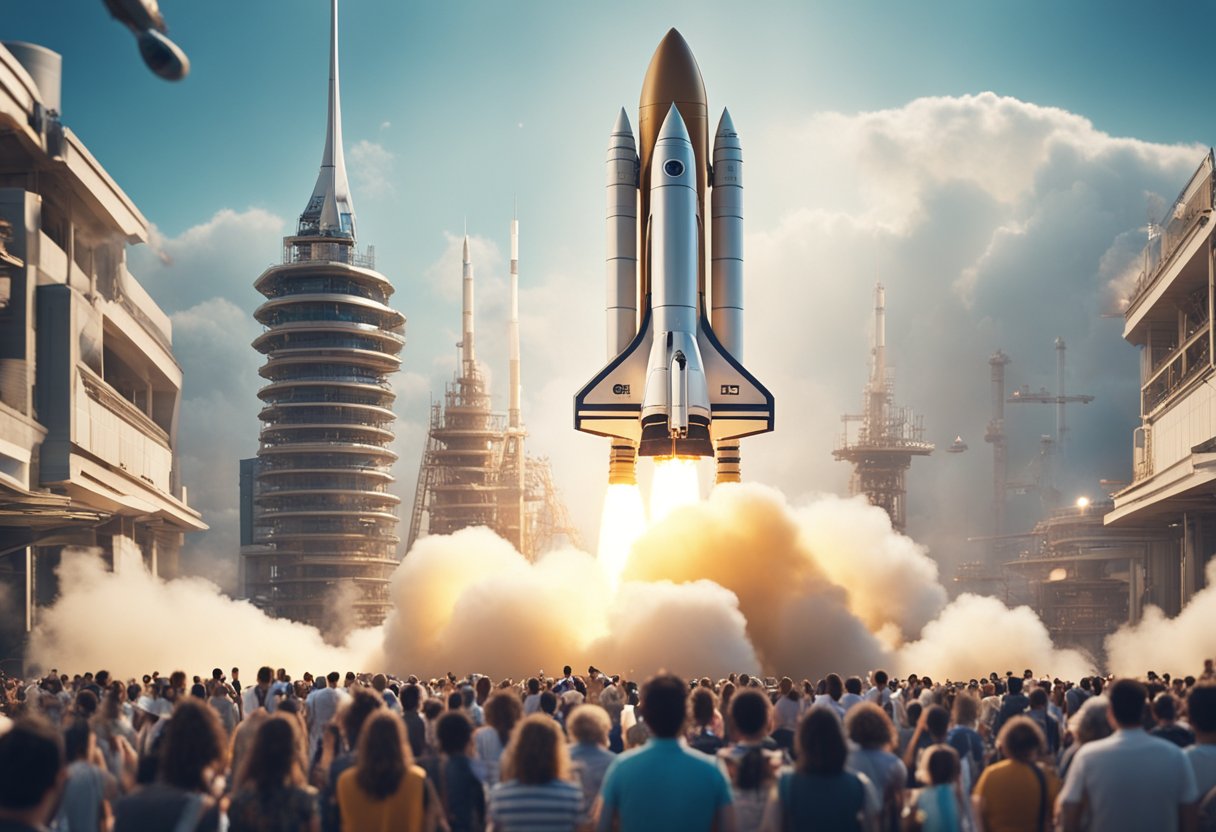
In this section, we address the most pressing queries for those interested in becoming involved with space tourism, from the qualifications needed to become a space pilot to the long-term outlook of the industry.
To command a spacecraft as a Space Tourism Pilot, one typically needs an extensive background in aviation or aerospace engineering, coupled with professional flight experience. A master’s degree in a STEM field is often a basic requirement, alongside a rigorous training programme specific to spaceflight.
Indeed, as space tourism evolves, job prospects in this sector are expected to expand. This includes roles in piloting, engineering, safety compliance, and customer service. The push for accessible space travel is likely to drive employment growth within this innovative industry.
The financial outlay for participating in a space flight programme as a tourist can be substantial. Costs can range into the hundreds of thousands of pounds, depending on the company and the duration of the flight.
Civilians partaking in space travel require comprehensive training to withstand the physical demands, including exposure to high G-forces. This preparation involves simulations, physical conditioning, and acclimatisation to the space environment, often spanning several months.
Institutions such as NASA have historically provided astronaut training, but private spaceflight companies now offer programmes tailored to civilian space tourists. These programmes are designed to equip participants with the necessary skills and knowledge for their journeys.
The long-term prospects for the space tourism sector appear promising, with advancements in technology and increasing interest driving growth. As more companies enter the market and spaceflight becomes more routine, the industry is set to become a more significant part of the global tourism economy.